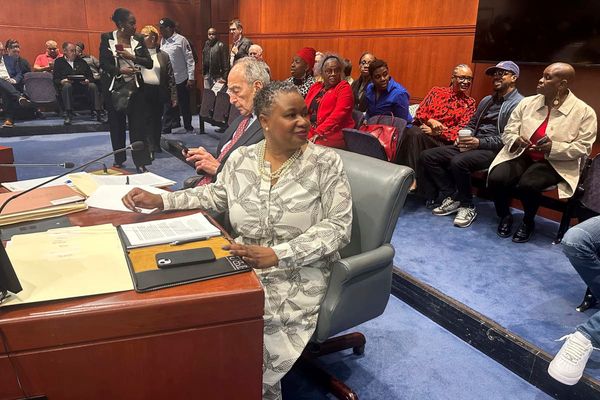
Buddhist monks who have sought enlightenment in a globally unique forest in Western Australia are standing defiant after fighting off an attempt to explore their area for minerals.
Conservationists say the northern Jarrah forest in the state’s south-west, already under pressure from climate change, is the target of several mining companies looking to explore for minerals needed for the clean energy transition.
Now the forest monks of the Bodhinyana monastery, south of Perth, are encouraging other communities to “rise up” and object to the wave of applications.
Monks attended a public meeting and distributed leaflets and petitions to block prospector Telupac’s application to explore an area that included their monastery and retreat.
According to the website of the state government’s Department of Mines, Industry Regulation and Safety, Perth-based Telupac has indicated it is withdrawing its application to explore the area.
Ajahn Appicchato, a senior monk at the monastery, said the group was happy, but was also concerned the company could re-apply.

“We’re aware this might not stop even though it’s good news they have held back that application.
“The reason we’re here is to develop deep meditation and insight. We live in the forests and go into town to teach and do community service.
“We need a minimum level of peacefulness to sit and to walk. If you have incredible noise and digging, that impinges directly on the meditation.
“It’s OK to worry and fret, but it’s not useful. You have to get out there and drum up signatures and talk to people and drop leaflets. You have to be active.”
The latest UN climate change assessment identified the Jarrah forests as vulnerable to collapse because of a shift to hotter and drier conditions that is already taking place.
Large areas of the forests continue to be cleared to mine bauxite for aluminium. A joint report from two groups of scientists and academics – the Leeuwin Group and Beeliar Group – has found the northern Jarrah forests cover 825,000 hectares, of which only 23% is protected.

Dr Joe Fontaine, an ecologist at Murdoch University, said: “This is the only place on the planet where these jarrah forests grow. It has a combination of high biodiversity and a lot of threats.”
While mining companies do not have to disclose what minerals they intend to look for, conservation groups suspect the driver is global demand for lithium for electric vehicle batteries.
Campaign group WA Forest Alliance says about 40% of the Jarrah forests are under some form of exploration or mining application. The ABC reported in June that Rio Tinto had withdrawn 10 applications to look for lithium and nickel in the region, partly because of community concerns.
The WA Forest Alliance convener, Jess Beckerling, said the situation faced by the monks near the town of Jarrahdale was “playing out across the region with people feeling deeply anxious about their livelihoods and the future viability of the forests”.
She said: “There have to be some places on Earth that are off limits to mining – and the remaining native forests must be up the top of that list. We need these mining applications withdrawn or rejected, and for government to protect the south-west forests in secure national parks.”
Jeff Bremer, a member of the Jarrahdale Forest Protectors group and former mining engineer, says thousands of people are unaware of applications to explore in their areas.
Under the state’s Mining Act, a company does not have to notify landowners of an application to explore an area if the minerals they are targeting are at least 30 metres below the surface.

Bremer says this means a 35-day period for formal objections after the application is made often runs out before the public is aware.
Bremer says when miners get exploration permits, they can then strike individual deals with landholders to access minerals at the surface, and then petition the minister to reclassify a tenement to allow mining at the surface but with no need to notify anyone other than the landholder.
WA Forest Alliance has set up a program to monitor the government’s mining titles database and alert communities to applications over public land.
The monks near Jarrahdale only became aware of the application, which was also opposed by the local shire council, after being contacted by campaigners.
“As soon as the community rises up, they can stop these proposals quickly,” said Ajahn Appicchato. “You can see the power of the community. You have to keep the pressure on.”
The Guardian was unable to reach a representative of Telupac for comment.
A Department of Mines, Industry Regulation and Safety spokesperson said it had established a liaison officer as a “dedicated point of contact for queries related to mining tenements and applications” in the area “to ensure community groups, private landowners, local government authorities, traditional owners and mining applicants understand their rights and obligations under the Mining Act”.
A statement said all exploration applications were subject to “a number of environmental, water, heritage and Aboriginal heritage approvals”.
All mining tenement applications were published on a publicly available noticeboard on the department’s website, a statement said, and the Mining Act included a process “that allow people to object to mining tenement applications through the Warden’s Court”.







